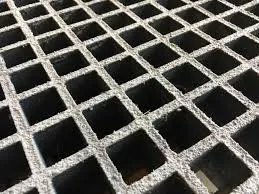
-
 Afrikaans
Afrikaans -
 Albanian
Albanian -
 Amharic
Amharic -
 Arabic
Arabic -
 Armenian
Armenian -
 Azerbaijani
Azerbaijani -
 Basque
Basque -
 Belarusian
Belarusian -
 Bengali
Bengali -
 Bosnian
Bosnian -
 Bulgarian
Bulgarian -
 Catalan
Catalan -
 Cebuano
Cebuano -
 China
China -
 China (Taiwan)
China (Taiwan) -
 Corsican
Corsican -
 Croatian
Croatian -
 Czech
Czech -
 Danish
Danish -
 Dutch
Dutch -
 English
English -
 Esperanto
Esperanto -
 Estonian
Estonian -
 Finnish
Finnish -
 French
French -
 Frisian
Frisian -
 Galician
Galician -
 Georgian
Georgian -
 German
German -
 Greek
Greek -
 Gujarati
Gujarati -
 Haitian Creole
Haitian Creole -
 hausa
hausa -
 hawaiian
hawaiian -
 Hebrew
Hebrew -
 Hindi
Hindi -
 Miao
Miao -
 Hungarian
Hungarian -
 Icelandic
Icelandic -
 igbo
igbo -
 Indonesian
Indonesian -
 irish
irish -
 Italian
Italian -
 Japanese
Japanese -
 Javanese
Javanese -
 Kannada
Kannada -
 kazakh
kazakh -
 Khmer
Khmer -
 Rwandese
Rwandese -
 Korean
Korean -
 Kurdish
Kurdish -
 Kyrgyz
Kyrgyz -
 Lao
Lao -
 Latin
Latin -
 Latvian
Latvian -
 Lithuanian
Lithuanian -
 Luxembourgish
Luxembourgish -
 Macedonian
Macedonian -
 Malgashi
Malgashi -
 Malay
Malay -
 Malayalam
Malayalam -
 Maltese
Maltese -
 Maori
Maori -
 Marathi
Marathi -
 Mongolian
Mongolian -
 Myanmar
Myanmar -
 Nepali
Nepali -
 Norwegian
Norwegian -
 Norwegian
Norwegian -
 Occitan
Occitan -
 Pashto
Pashto -
 Persian
Persian -
 Polish
Polish -
 Portuguese
Portuguese -
 Punjabi
Punjabi -
 Romanian
Romanian -
 Russian
Russian -
 Samoan
Samoan -
 Scottish Gaelic
Scottish Gaelic -
 Serbian
Serbian -
 Sesotho
Sesotho -
 Shona
Shona -
 Sindhi
Sindhi -
 Sinhala
Sinhala -
 Slovak
Slovak -
 Slovenian
Slovenian -
 Somali
Somali -
 Spanish
Spanish -
 Sundanese
Sundanese -
 Swahili
Swahili -
 Swedish
Swedish -
 Tagalog
Tagalog -
 Tajik
Tajik -
 Tamil
Tamil -
 Tatar
Tatar -
 Telugu
Telugu -
 Thai
Thai -
 Turkish
Turkish -
 Turkmen
Turkmen -
 Ukrainian
Ukrainian -
 Urdu
Urdu -
 Uighur
Uighur -
 Uzbek
Uzbek -
 Vietnamese
Vietnamese -
 Welsh
Welsh -
 Bantu
Bantu -
 Yiddish
Yiddish -
 Yoruba
Yoruba -
 Zulu
Zulu
grp insulation tank
Understanding GRP Insulation Tanks A Comprehensive Overview
Glass Reinforced Plastic (GRP) insulation tanks have emerged as a revolutionary solution in various industries, offering a unique combination of durability, efficiency, and sustainability. These tanks are primarily used for the storage of fluids, particularly those that require thermal insulation, such as water, chemicals, and other sensitive substances. Their construction involves a robust combination of plastic resins and glass fibers, ensuring a lightweight yet incredibly strong structure.
Understanding GRP Insulation Tanks A Comprehensive Overview
Another notable advantage of GRP insulation tanks is their resistance to corrosion. Unlike traditional metal tanks, which are susceptible to rust and degradation, GRP tanks can withstand harsh environmental conditions and corrosive substances. This resilience not only extends the lifespan of the tanks but also reduces maintenance costs, making them a cost-effective option in the long run. Furthermore, the lightweight nature of GRP allows for easier handling and installation compared to heavier materials.
grp insulation tank

The versatility of GRP insulation tanks is another appealing aspect. They can be manufactured in various sizes and shapes, tailored to meet specific customer requirements. Whether it’s a small tank for residential use or a large storage solution for industrial applications, GRP insulation tanks can be customized to fit any need. This flexibility, combined with their capacity for multiple applications, makes them a popular choice across several sectors.
Environmental considerations are increasingly influencing market trends, and GRP insulation tanks align well with sustainability initiatives. The materials used in their production can be sourced responsibly, and their longevity reduces the need for frequent replacements. Additionally, GRP tanks can be recycled at the end of their life cycle, minimizing their environmental footprint.
In the realm of installation and maintenance, GRP insulation tanks present additional advantages. The installation process is typically straightforward, often requiring less labor and time compared to alternative tank materials. Once installed, the tanks require minimal upkeep, mainly due to their durable and corrosion-resistant properties.
In conclusion, GRP insulation tanks represent an innovative and practical choice for fluid storage solutions across diverse industries. With their superior thermal insulation, resistance to corrosion, lightweight design, and environmental benefits, they are poised to meet the demands of modern applications while contributing to sustainability efforts. As industries continue to seek efficient and eco-friendly alternatives, GRP insulation tanks stand out as a leading option for the future.
Latest news
-
Exploring the Benefits of Top Hammer Drifter Rods for Enhanced Drilling PerformanceNewsJun.10,2025
-
High-Precision Fiberglass Winding Machine for GRP/FRP Pipe Production – Reliable & Efficient SolutionsNewsJun.10,2025
-
FRP Pipes & Fittings for Shipbuilding - Corrosion-Resistant & LightweightNewsJun.09,2025
-
Premium FRP Flooring Solutions Durable & Slip-ResistantNewsJun.09,2025
-
Premium Fiberglass Rectangular Tanks Durable & Lightweight SolutionNewsJun.09,2025
-
Tapered Drill String Design Guide Durable Performance & UsesNewsJun.09,2025









